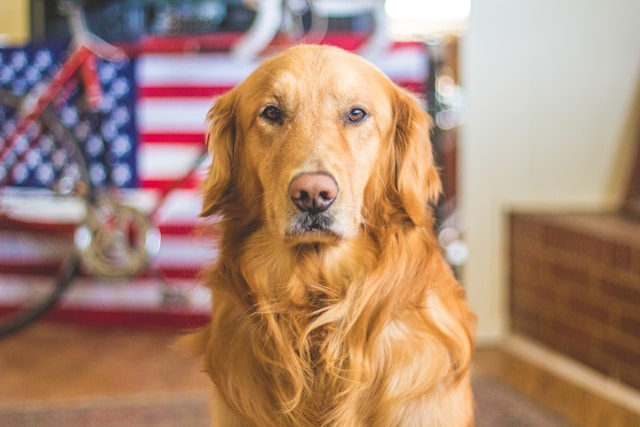Essential Guide to Dog Ear Care: Tips for Healthy Paws and Ears
Maintaining your dog’s ear health is crucial for their overall well-being. Healthy ears can prevent discomfort, infections, and even hearing loss. This guide provides a thorough overview of dog ear care, including cleaning techniques, recognizing common issues, and tips for keeping your dog’s ears in top shape.
Understanding Your Dog’s Ear Anatomy
To effectively care for your dog’s ears, it’s important to understand their anatomy:
- Outer Ear: Comprising the visible part (pinna) and ear canal, the outer ear collects sound and directs it toward the middle ear.
- Middle Ear: Contains the eardrum and three tiny bones that transmit sound vibrations to the inner ear.
- Inner Ear: Houses the cochlea and vestibular system, crucial for hearing and balance.
Why Ear Care is Important
Proper ear care helps prevent:
- Ear Infections: Common in dogs, especially those with floppy ears or those prone to allergies.
- Ear Mites: Tiny parasites that cause itching and irritation.
- Earwax Build-Up: Excessive earwax can lead to discomfort and hearing problems.
Cleaning Your Dog’s Ears
1. Determine the Need for Cleaning
Regular ear cleaning is part of routine care for some dogs, especially those prone to ear infections or with floppy ears. However, over-cleaning can irritate the ear canal, so it’s important to find a balance.
2. Choose the Right Cleaning Solution
Use a vet-approved ear cleaner, which can help dissolve wax and disinfect the ear canal. Avoid using hydrogen peroxide, alcohol, or other harsh substances as they can cause irritation.
3. Cleaning Process
- Gather Supplies: You will need an ear cleaner, cotton balls or gauze, and possibly treats for positive reinforcement.
- Position Your Dog: Gently hold your dog’s head still. You might need a helper to hold your dog or use a treat to keep them calm.
- Apply the Cleaner: Squeeze a few drops of the ear cleaner into the ear canal. Be sure not to touch the tip of the bottle to the ear to avoid contamination.
- Massage the Base: Gently massage the base of the ear to help the cleaner reach deeper into the canal and loosen any debris.
- Wipe Away Debris: Use a cotton ball or gauze to wipe away any loosened wax and debris from the ear canal and outer ear.
- Dry the Ear: Allow your dog to shake its head to expel any excess fluid, and then use a clean cotton ball to dry the ear.
4. Frequency of Cleaning
For most dogs, cleaning once a month is sufficient. However, dogs with chronic ear issues may require more frequent cleaning. Consult your vet for personalized advice.
Recognizing Common Ear Problems
1. Ear Infections
Ear infections can be caused by bacteria, yeast, or allergies. Symptoms include:
- Scratching or Rubbing: Your dog may scratch at their ears or rub them on the ground.
- Foul Odor: An unpleasant smell can indicate infection.
- Discharge: Look for abnormal discharge that is yellow, brown, or bloody.
- Redness and Swelling: Infected ears may appear red and swollen.
2. Ear Mites
Ear mites are tiny parasites that can cause intense itching and irritation. Symptoms include:
- Severe Itching: Persistent scratching or shaking of the head.
- Coffee Grounds Appearance: Dark, crumbly debris in the ear canal.
3. Ear Hematomas
An ear hematoma is a collection of blood in the ear flap, often caused by excessive scratching or head shaking. Symptoms include:
- Swollen Ear Flap: The ear may appear puffy and swollen.
- Pain: Your dog might be sensitive when the ear is touched.
Preventive Measures for Healthy Ears
1. Regular Vet Check-Ups
Include ear inspections in your dog’s routine veterinary visits. Your vet can detect early signs of infection or other issues and recommend appropriate treatments.
2. Keep Ears Dry
Moisture can lead to infections. After swimming or bathing, make sure to dry your dog’s ears thoroughly. Use a clean towel or a gentle ear-drying solution if needed.
3. Maintain a Healthy Diet
A balanced diet can improve your dog’s overall health and may help prevent ear problems. Consult your vet about the best diet for your dog’s needs.
4. Avoid Foreign Objects
Be cautious of objects that might get lodged in your dog’s ears, such as sticks or grass. Regularly check your dog’s ears for any foreign objects and remove them gently if found.
When to See the Vet
If you notice any of the following symptoms, consult your vet immediately:
- Persistent Pain: Your dog shows signs of significant discomfort or pain.
- Severe Discharge: Abnormal or excessive discharge that does not improve.
- Chronic Issues: Recurring ear problems despite regular care.
Conclusion
Taking care of your dog’s ears is a vital aspect of their overall health and well-being. By understanding ear anatomy, performing regular cleanings, and recognizing signs of common ear issues, you can help ensure your dog’s ears remain healthy and free from discomfort.
Regular vet visits and preventive measures will also support your dog’s ear health, keeping their tails wagging and their ears in tip-top shape. If in doubt or if your dog shows any concerning symptoms, always seek professional advice to keep their ears—and their whole body—happy and healthy.











Leave a Reply